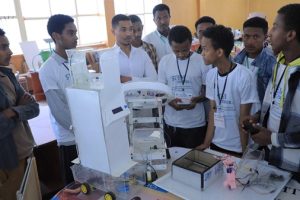
In the majority of the known human history, women have been oppressed and abused. In many societies, power remains to be concentrated in the hands of men while about half of the population, women, who are the foundations of life, only received recognition for their role in reproduction.
Have there been progresses? Yes indeed, but not enough. Lots of women particularly mothers endure lifelong agony, enslaved in domestic servitude, exposed to a high rate of mortality and experience all forms of physical and mental hazards.
Absence of health facilities, education, proper nutrition and dietary diversity in developing countries made situations more complicated.
Developed nations’ success laid its foundation on the sound policy and effective implementation of women empowerment. Germany, which suffered the loss of its men in the aftermath of the devastating world wars, for instance, was able to emerge as one of prosperous nations of the world by the efforts of its women.
The issues of women are far beyond the right of representation and assuming power. It is a very fundamental entity that determines tomorrow as the fate of humanity depends on the safety of mothers.
Recently, Ministry of Health considered January (Tir) as safe mother month by involving the media and holding round table discussion.
Accordingly, experts called for maternal care in the first 1,000 days of life. These days which starts in the womb and ends at the age of two, determine the physical, intellectual and psychological domains of a child.
Apart from following up health care, nutrition matters mortality and morbidity rate of mothers and children.
If mothers are not well nourished on those days dabbed as a window of opportunity, children would be stunned, a likely irreversible lifelong problem.
In Ethiopia, 67 percent of the current adult population were stunted while under five years of age. Stunted workers are less productive than non-stunted workers, and are less able to contribute to the national economy.
1,000 days: Indicates the time from pregnancy until 2 years of a child’s life. It is known as a window of opportunity to prevent malnutrition. Each window has evidence-based interventions to be addressed in various aspects.
If interventions are not done on time, at full scale, it would be a missed opportunity as the first 1,000 days set the foundations for all days to follow.
In general, stunted workers are less productive in manual and non-manual labour than non-stunted workers, and are less able to contribute to the national economy.
The cost of hunger study done in Ethiopia indicate, the loss of ETB 55.5 billion (16.5 %) of GDP in 2009 E.C due to malnutrition. If we reduce underweight to 5 percent and stunting 10 percent, it would be possible to reduce losses by ETB 148 million by 2025.
Under-nutrition in children predisposes to a variety of health and developmental risks that can be reversed if tackled at the early stages of a child’s life.
For every additional case of child illness, both the families and health systems are faced with additional economic costs. Increased cases related to pathologies (ADS, anaemia, ARI, fever).
Maternal overweight and obesity are associated with maternal morbidity, preterm birth, and increased infant mortality.
Fetal growth restriction is associated with maternal short stature and underweight and causes 12% of child deaths.
Under-nutrition, including fetal growth restriction, suboptimum breastfeeding, stunting, wasting, and deficiencies of vitamin A and zinc, cause 45% of child deaths, resulting in 3.1 million deaths annually.
Thus, to avert such and such crisis investing in mothers’ safety would have paramount importance and should be taken as the principal agenda which determine the fate of the posterity.
The Ethiopian Herald January 30/2020
BY LAKACHEW ATINAFU





